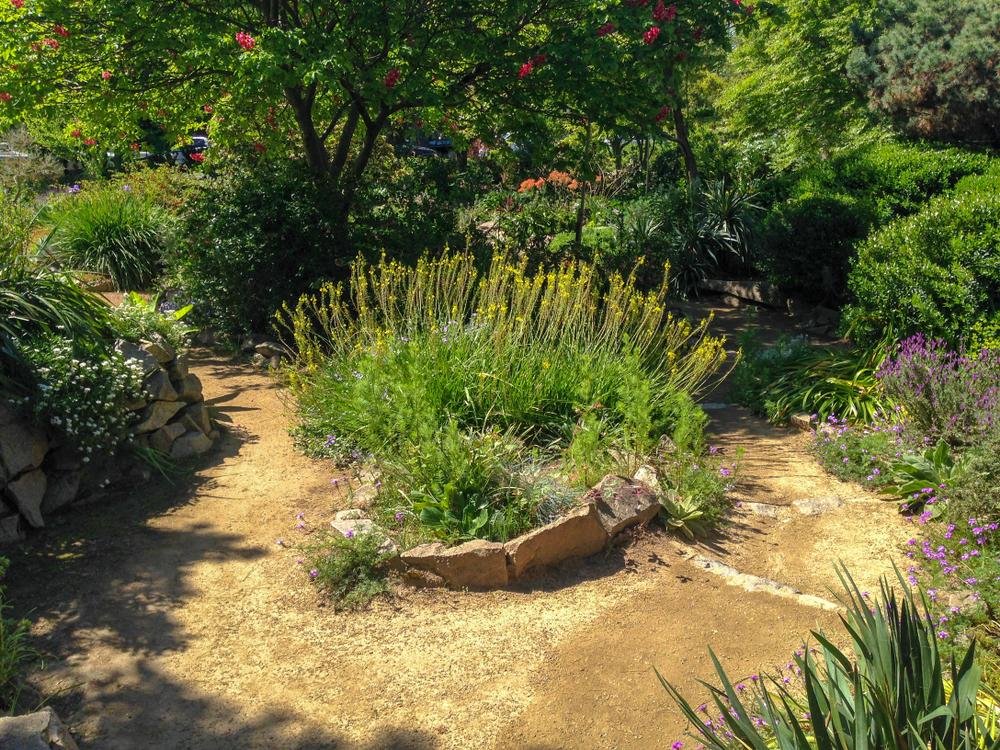6 Drought-Resistant Landscaping Ideas for Sacramento

Why Drought-Resistant Landscaping Matters
Droughts are a recurring challenge in Sacramento. With water scarcity affecting both residents and the environment, adopting drought-resistant landscaping is not just a trend; it’s a necessity. The City of Sacramento frequently enforces water conservation measures, making it essential for homeowners to adapt.
Creating a drought-resistant landscape doesn’t mean sacrificing beauty. In fact, many plants and design elements that thrive in low-water conditions can enhance the aesthetic appeal of your yard. By choosing water-efficient solutions, you contribute to environmental conservation while also reducing your utility bills.
You’ll also enjoy the benefits of minimal maintenance. Drought-tolerant plants and materials often require less care than traditional lawns and gardens, allowing you more time to relax and enjoy your outdoor space.
Assessing Your Current Landscape
Before embarking on a landscaping overhaul, evaluate your current outdoor setup. Identify areas that consume the most water and determine which plants and features are struggling to survive. This assessment will help you make informed decisions about which elements need replacing or revamping.
Take note of the sun and shade patterns in your yard. Understanding these patterns will guide your selection of drought-tolerant plants. Some species thrive in full sun, while others prefer partial shade, so placement is critical for success.
Consider soil quality and drainage, too. Well-draining soil is crucial for many drought-resistant plants, as it prevents water from pooling around roots, which can cause rot. Amend your soil with organic matter if needed to improve its structure and drainage capabilities.
Choosing Native Plants for Sacramento
One of the most effective strategies for drought-resistant landscaping is incorporating native plants. Sacramento boasts a rich array of flora that thrives naturally in its climate, requiring minimal water and maintenance.
Plants like California poppies, manzanita, and ceanothus are excellent choices. Their vibrant colors and unique textures can add visual interest to your garden while supporting local ecosystems. These plants have adapted to the region’s dry summers and mild, wet winters, making them ideal for sustainable landscaping.
In addition to their resilience, native plants often attract beneficial wildlife, such as pollinators and birds. By choosing these plants, you support biodiversity and create a thriving, balanced ecosystem in your backyard.
Designing Water-Efficient Gardens
Creating a water-efficient garden involves more than just selecting drought-tolerant plants. Thoughtful design and layout play crucial roles in maximizing water conservation and aesthetic appeal.
Consider implementing a drip irrigation system. Drip irrigation delivers water directly to plant roots, minimizing evaporation and ensuring efficient use of resources. With programmable timers, you can further reduce water waste by watering at optimal times.
Incorporate mulch into your garden beds to retain moisture and suppress weeds. Organic mulches like bark or wood chips add nutrients to the soil as they decompose, improving plant health. Rock mulch is another option that provides a clean, modern look while conserving water.
Xeriscaping for Modern Appeal
Xeriscaping is a landscaping style that focuses on water conservation through strategic plant selection and design. It’s an ideal choice for Sacramento homeowners looking to create a contemporary and environmentally friendly outdoor space.
Begin by designing a layout that minimizes turf areas, which are typically water-intensive. Instead, focus on hardy ground covers like creeping thyme or sedum, which add color and texture without demanding excessive water.
Integrate hardscape elements such as gravel paths, stone patios, and decorative boulders. These features add structure and visual interest while reducing the overall water footprint of your landscape.
Utilizing Succulents and Cacti
Succulents and cacti are iconic choices for drought-resistant landscapes, offering a myriad of shapes, sizes, and colors. Their ability to store water in their leaves makes them perfectly suited for Sacramento’s dry climate.
Consider incorporating species like agave, aloe, and echeveria into your garden. These plants are not only striking but also low-maintenance, requiring minimal watering and care. Group them together to create eye-catching displays that celebrate their unique forms.
Use succulents and cacti to create focal points or accent areas in your landscape. Their architectural qualities and bold colors can draw the eye and add interest to any garden design.
Incorporating Edible Drought-Tolerant Plants
Who says a drought-resistant garden can’t be productive? Consider adding edible plants that thrive in dry conditions to combine functionality with beauty.
Herbs like rosemary, sage, and thyme are excellent choices. These hardy plants require little water and can be used fresh in your kitchen. Plant them in pots or garden beds near your home for easy access.
Don’t forget drought-tolerant fruit and vegetable options like pomegranates, figs, and olives. These plants provide delicious yields while conserving water, making them valuable additions to any sustainable landscape.
Creating Shade and Wind Breaks
Strategically adding shade and wind breaks can enhance the comfort of your outdoor space while promoting water conservation. By reducing evaporation and protecting plants from harsh winds, these elements help your garden thrive even in challenging conditions.
Consider planting trees like oak or palo verde, which offer dappled shade without competing heavily for water. These trees can provide relief from the sun and create microclimates that support other drought-tolerant plants.
Install pergolas or trellises with climbing vines to create shaded areas for relaxation. These structures can also serve as wind breaks, reducing the impact of drying breezes on your garden.
Using Smart Irrigation Systems
Advancements in technology have made it easier than ever to manage water usage in your landscape. Smart irrigation systems offer precise control over watering schedules and amounts, helping you conserve water and maintain healthy plants.
These systems use sensors to monitor soil moisture levels and weather conditions, adjusting irrigation accordingly. This ensures that your plants receive the right amount of water at the right time, preventing waste and promoting growth.
By investing in a smart irrigation system, you can enjoy a lush, drought-resistant garden while minimizing your environmental impact.
Conclusion
Adopting drought-resistant landscaping in Sacramento is a powerful way to conserve water, reduce maintenance, and enhance the beauty of your outdoor space. By utilizing native plants, smart irrigation systems, and innovative design strategies, you can create a sustainable garden that thrives in the face of water scarcity.
